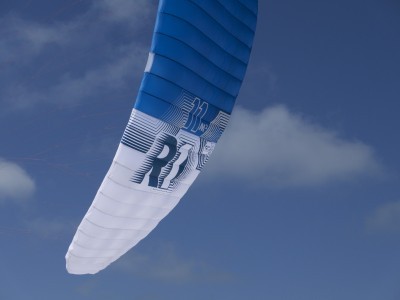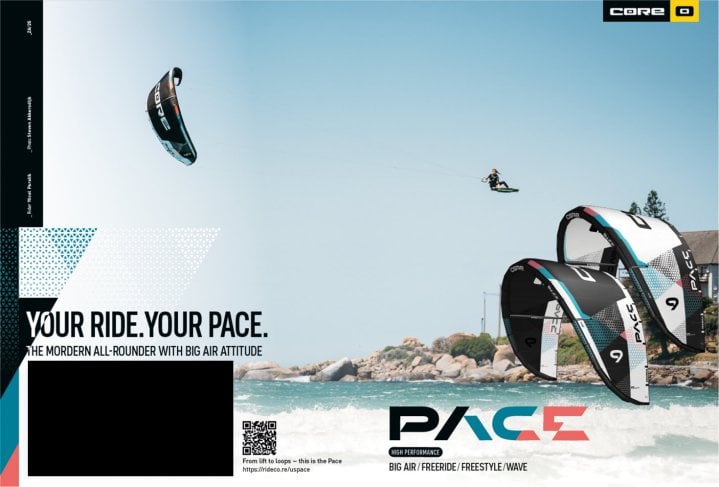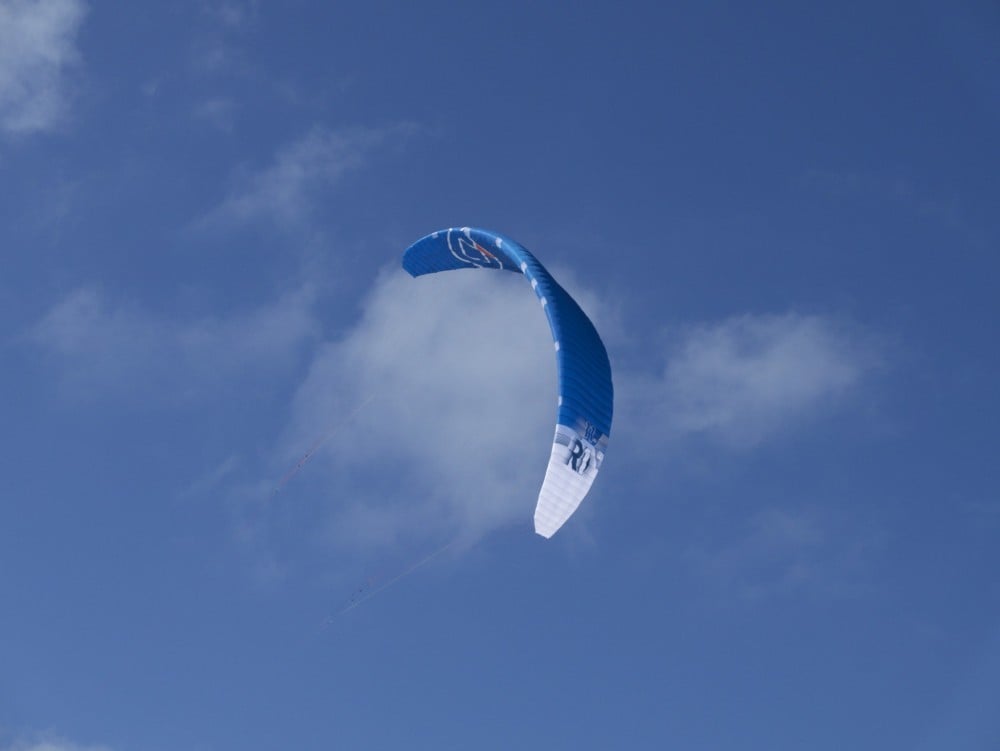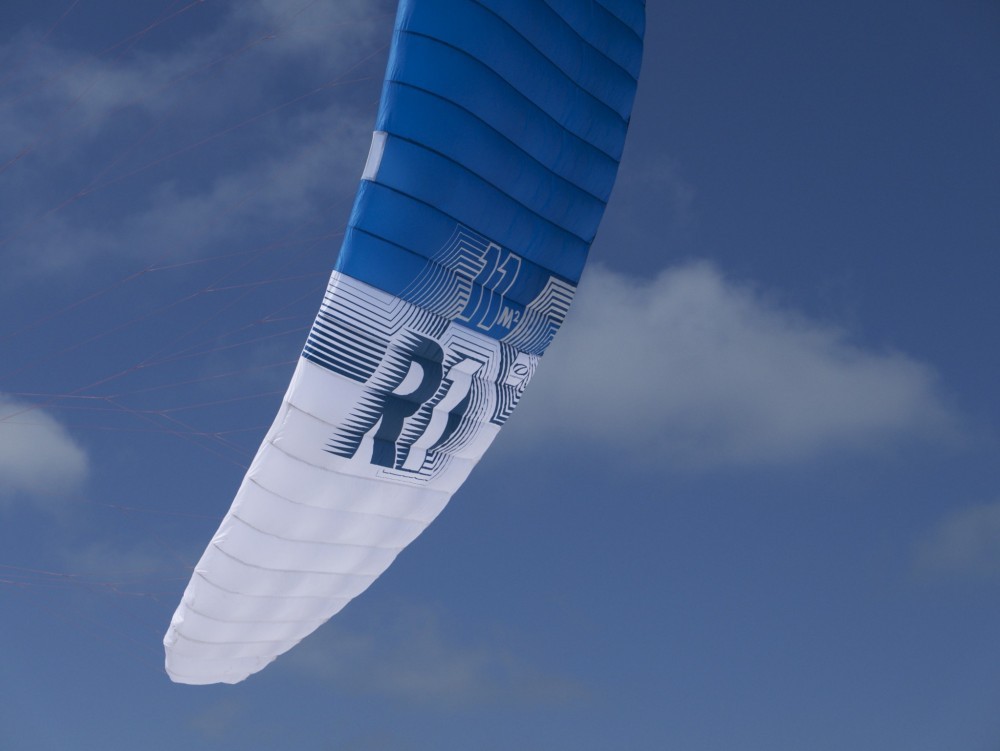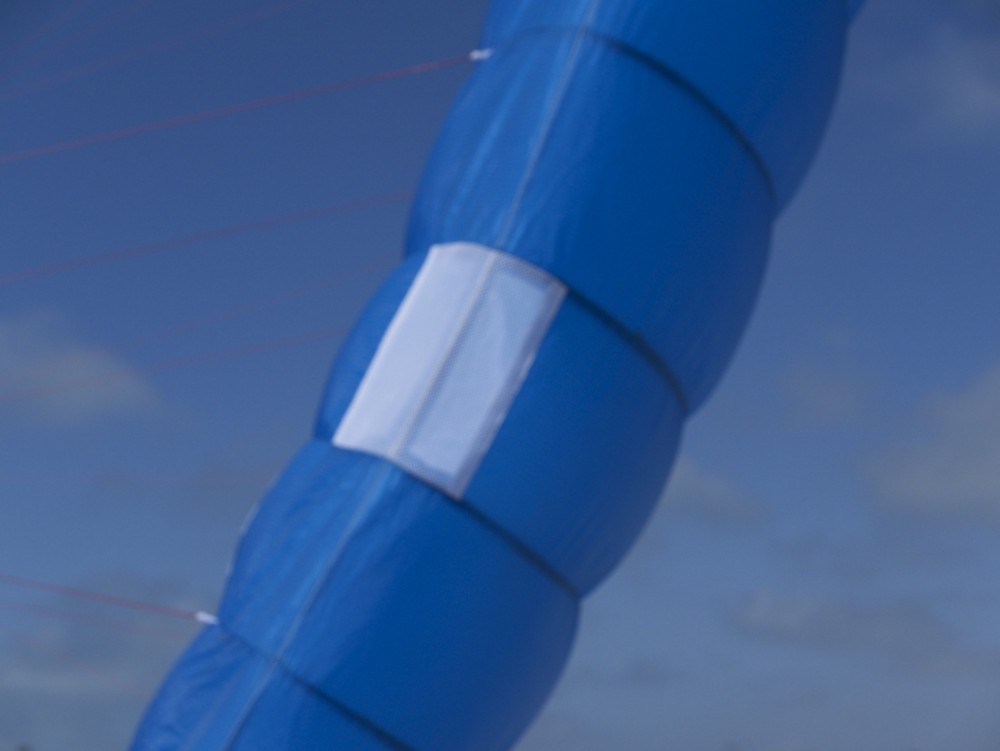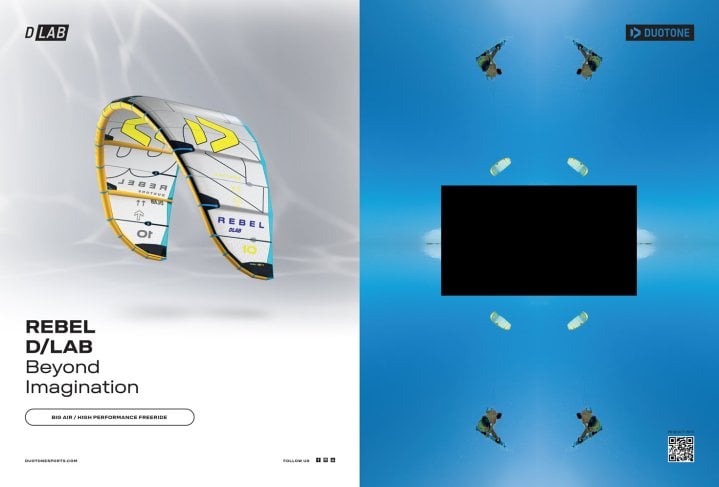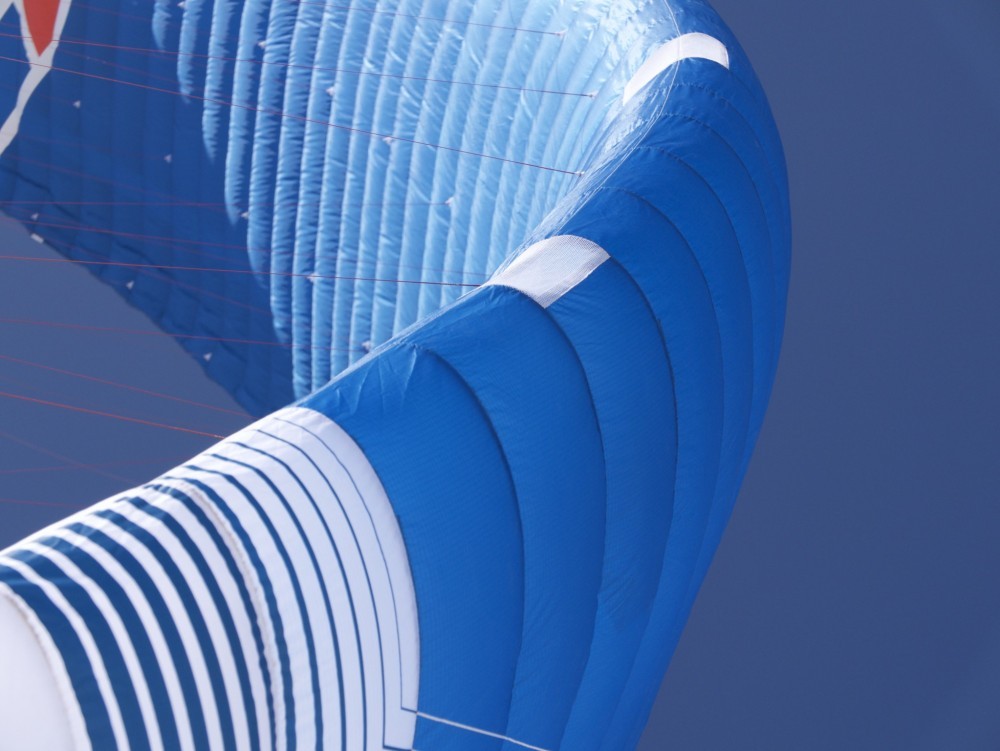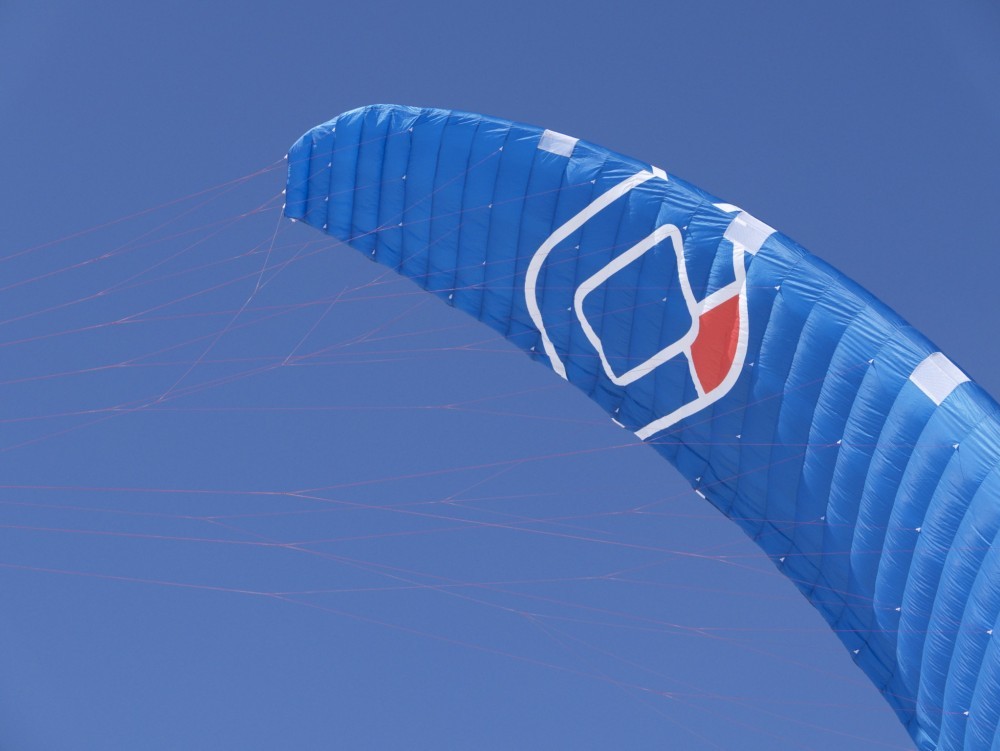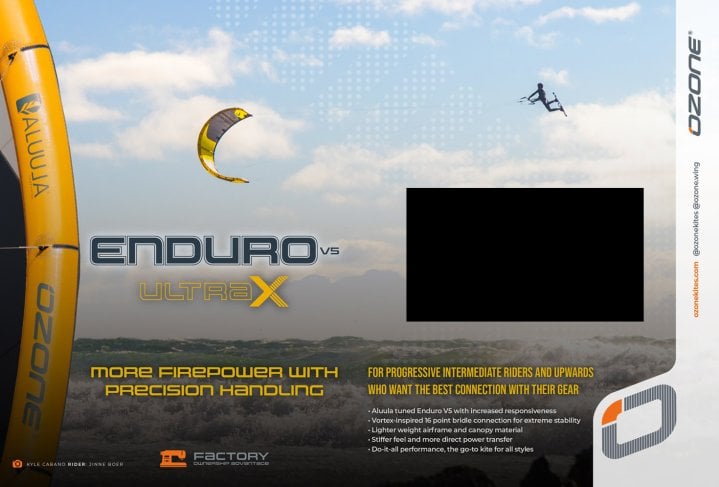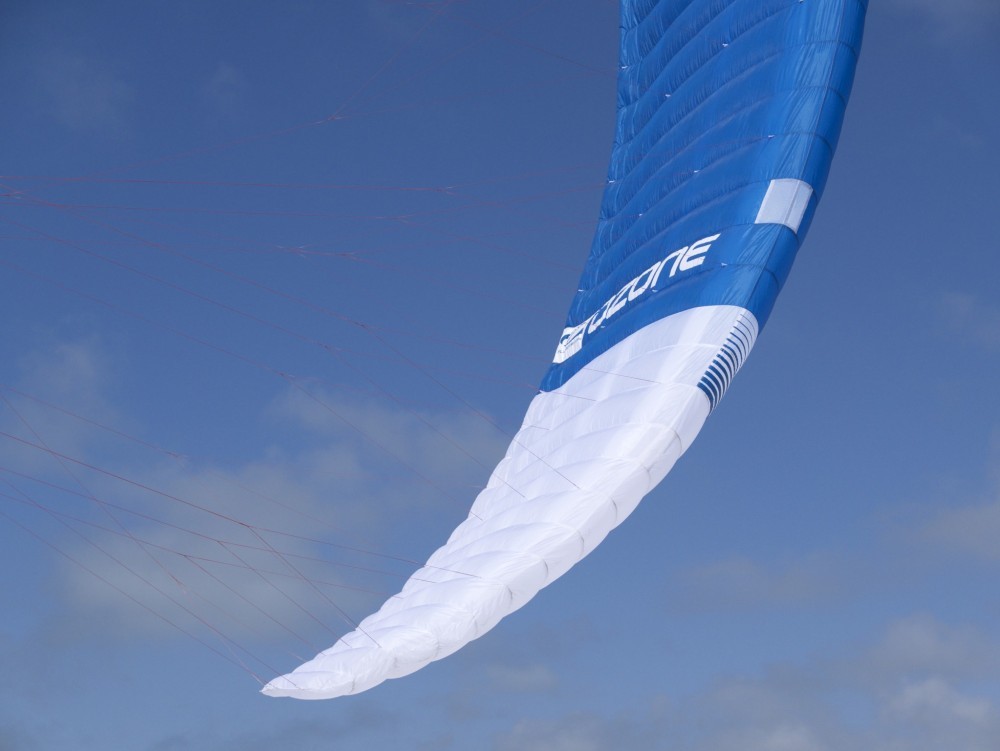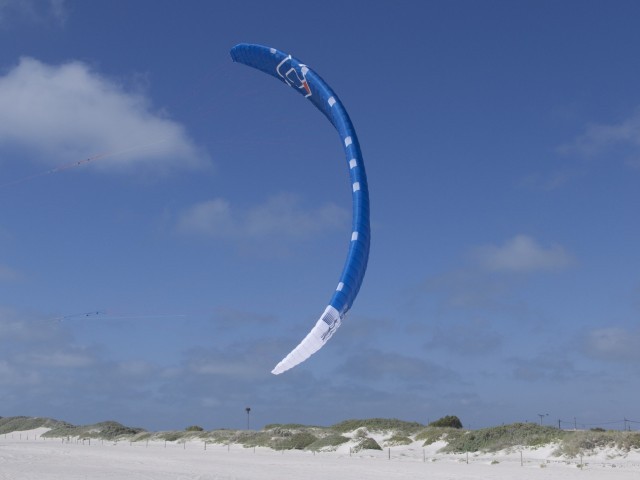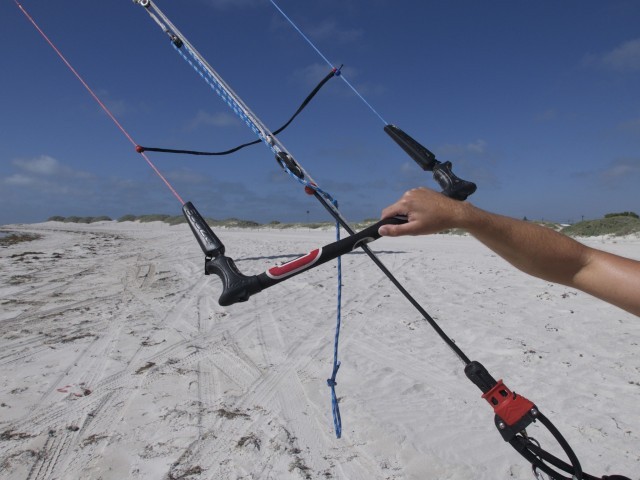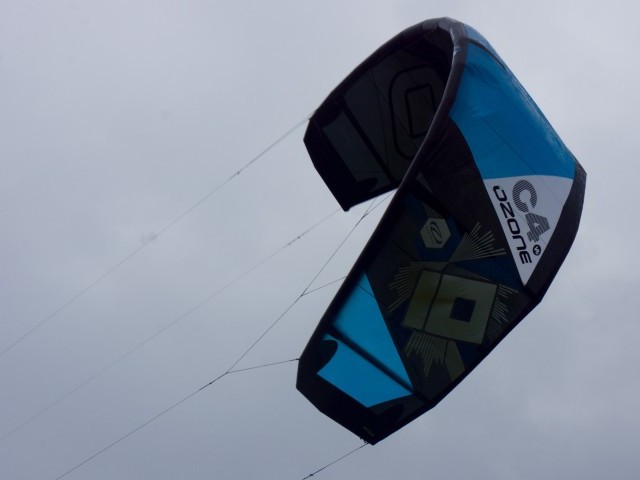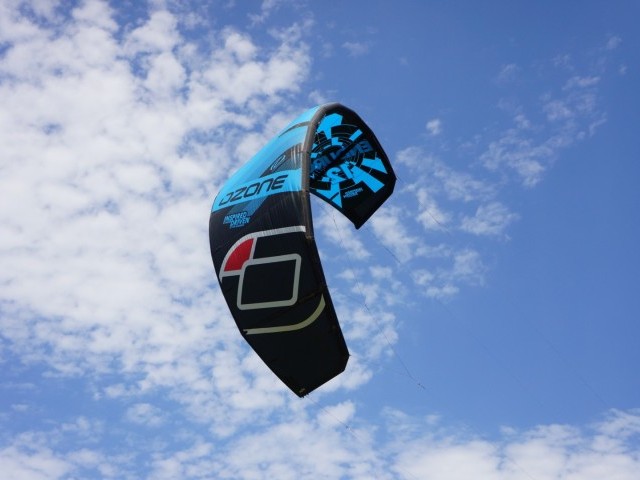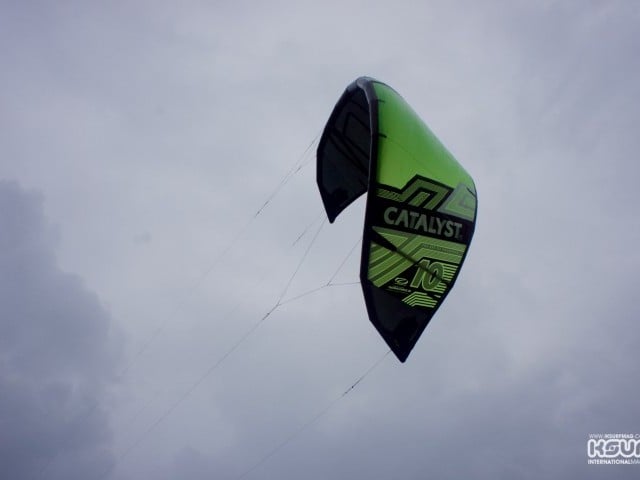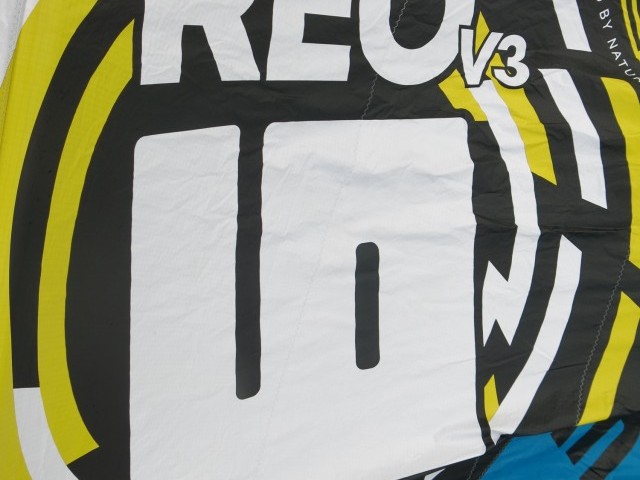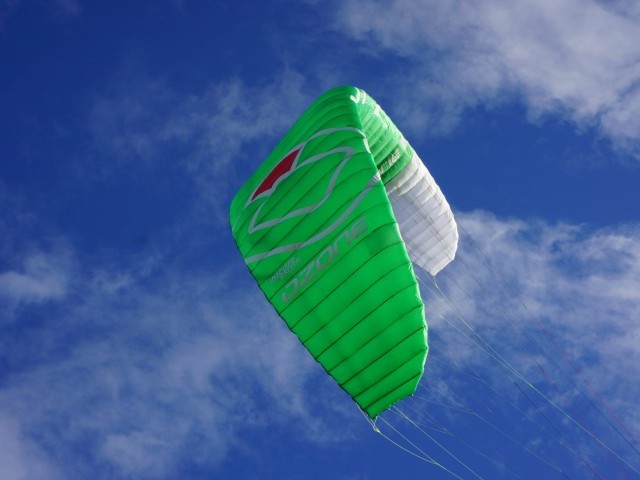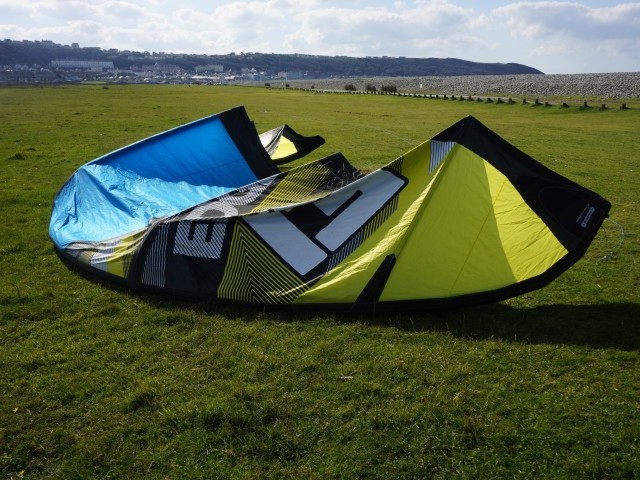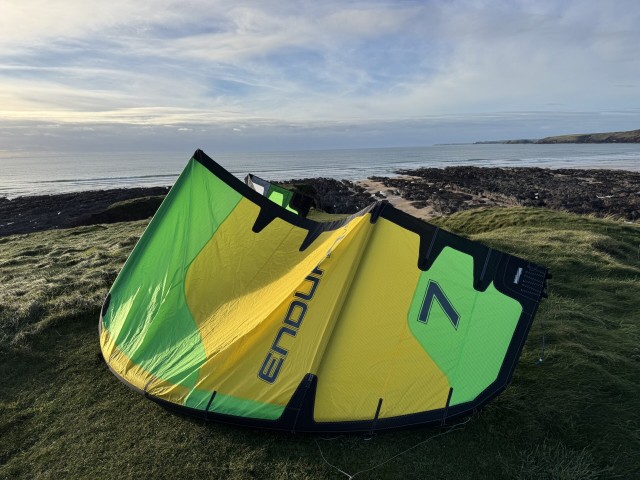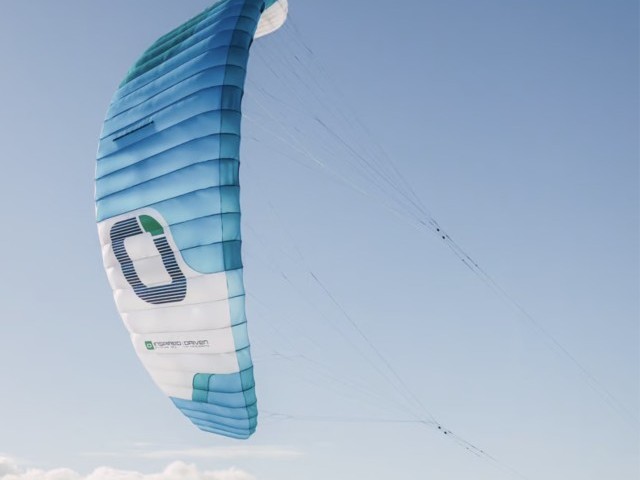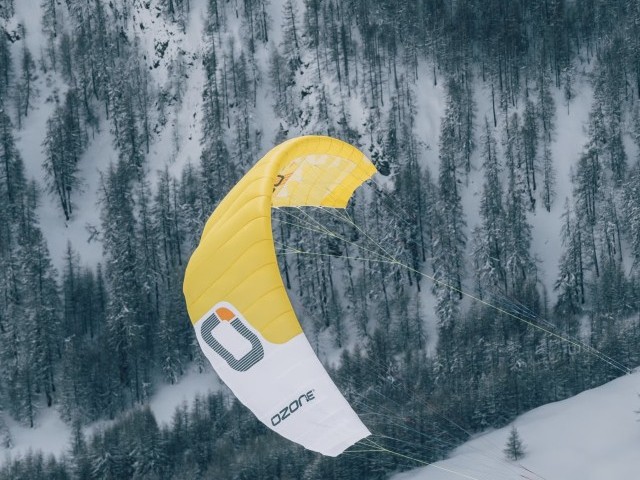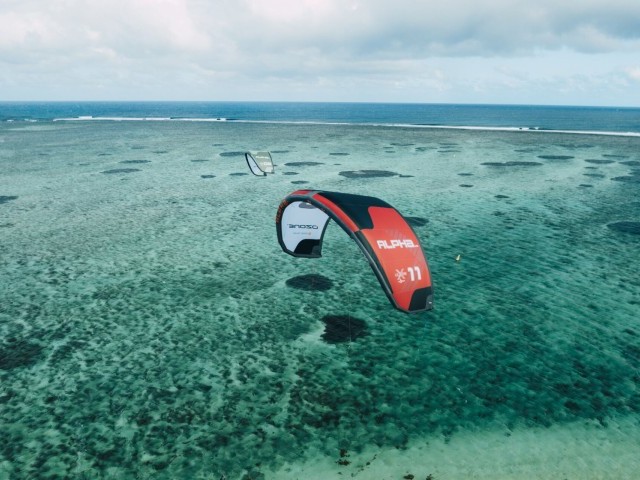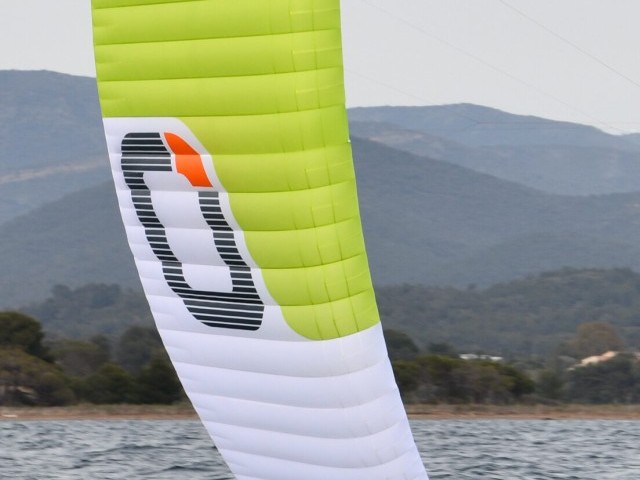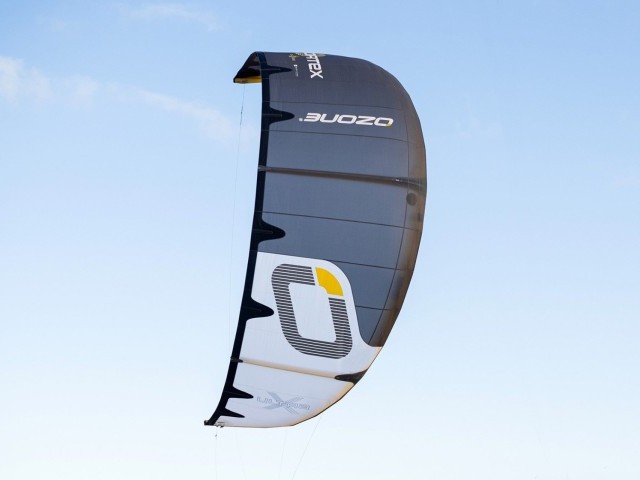At A Glance
After the huge success enjoyed by the Ozone Chrono both on and off the race circuit, the team stepped things up a gear with the new R1. Make no mistake this is an all-out high performance machine, aimed at the racer looking for the ultimate kite, or the freerider looking to go super fast and have an absolute weapon at the beach.
Ozone are no stranger to making foils; the Chrono arguably reshaped the racing scene a couple of years ago, but more than that they have been at the top of the paragliding game for decades. They have taken all their knowledge from the development of these styles of wings and put them into the R1.
The kite is very high aspect with a high cell count to offer unbridled performance. The higher number of cells reduces the “ballooning effect” between each cell to give more control over the shape of the wing. This, in turn, means a lot more work at the factory, but when you first look at this kite, you can see the hours that have gone into it during the production process. There are internal span-wise straps that work together with diagonal ribs to distribute the loads evenly helping to keep the foil as rigid as possible.
The bridle uses high-performance lines that are reduced in diameter to ensure less drag through the air. Elsewhere the best materials have been used to ensure durability while offering an extremely light-weight package to increase the low wind performance.
Sizes: 6, 7, 8, 9, 10, 11, 13, 15, 17, 19m
The Bar
The Foil Race Control System is a race ready bar with all the features you would expect to control the kite, but also to be able to tune it while hiking out off the board or foil during a race. The chicken loop is the tried and tested Megatron Release System found on all Ozone kites. This works well and allows you to easily eject the kite, but also to reconnect it when you want to get going again. There are two release modes with a standard one front line flag out that releases all the power of the kite, but you can also set it up suicide if you desire.
You can untwist the lines by spinning the handle above the chicken loop, so if you have a bunch of kiteloops to pull during a race, it is easy to untwist the lines afterwards. Depower features a 2-1 pulley with a clam cleat, the rope is long enough so you can easily trim the kite even whilst right out on the edge of your board.
Thin flying lines offer 300kg breaking strain on the front and 200kg strain on the rear to reduce drag while still being able to handle powered conditions; there is also a brake handle so you can reverse launch and land the kite on the rear lines. The bar itself is the same as the new Ozone bar for 2016 with the integrated EVA foam bar ends. It is comfortable to ride with, and we are big fans!
Essentially if you want to race right out of the box with this bar you can, no need to head to the chandlers and tweak it to suit your needs, this set-up is good to go!
In The Air
As we mentioned at the beginning, this is not a kite for beginners or even intermediates; if you want a foil kite for low-end freeriding fun look to the Chrono, the R1 is aimed at experts only. It is, however, very easy to fly, but being so high aspect it can be a bit of a handful, and you really need to have good flying skills to get the most out of it.
A solid understanding of over-sheeting and back stalling is essential when the kite is at the bottom of the wind range as you really have to fly the kite to get the most out of it. At this point we would also say don’t let the bridles confuse you; with a bit of practice and time on the beach, they are easy to understand, and you should be able to get a solid grasp on which bit does what. Having an understanding of this is crucial if you want to enjoy this kite!
You can, in light winds, launch dead down wind, but this is a risk, especially with a weapon like this. Go for a cross wind launch and have a helper hold the middle of the kite up so it fills with air. You’ll find it over your head after the launch with both wing tips deflated, so give the rear lines a good tug to inflate the tips. Once the kite is up and ready to go, it is time to feel the power…
We rode the R1 in a variety of conditions, light wind cruising in 10 knots with a surfboard under our feet, and flat out racing at the Lighthouse to Leighton pushing 25 knots in the open sea on a race board. As we mentioned earlier, it is an incredibly easy kite to fly. The turning response time is very quick, and while it isn’t going to turn like a 9m C kite we were very impressed by the handling of the R1. It responds to the input of the bar very quickly and can also be quite nimble when you want it to be.
In light winds, you need to fly the kite to get the apparent wind going, you’ll then find the low-end is very impressive indeed. We were surprised to find ourselves often the only person on the water with the R1, and we didn’t exactly have a huge one with the 11m, we can only imagine the power of the 15, 17 and 19m versions! Upwind is, of course, amazing and a key reason you would be looking to buy this kite in the first place.
We were equally impressed by the top end wind range, being high aspect, the kite depowers well, and we were clinging on during 25 knot days while the water fizzed along around us. The kite was controlled and well behaved which made riding a race board at Mach 10 a lot easier than it should have been.
The kite is water relaunchable, either reverse launch in light winds or tug on the front lines when there is enough breeze. It’s OK as long as it drops in the water perfectly, if it twists or bow-ties then it can be a nightmare to sort out, like any other foil kite. Essentially with this kite, don’t crash it, it will be much easier that way and if you do crash it then make sure you dry it out completely and get any sand out of it too.
The kite has a lot of hangtime, great if you are on a twin tip, but this is also important when tacking on a race board or foil. We found tacking quite easy with the amount of lift the kite generates as the kite goes above your head. I’ve never banged out so many perfect duck tacks in a row, which was handy as we had seen a shark during one test session!
For
Fast, high aspect racing machine that flies up and downwind with ease, lots of hangtime for freeriding too!
Against
This kite does need to be looked after, Ozone recommend a bridle check every 60 hours and also keeping an eye for stretch and wear and tear. Essentially this is a high-performance piece of kit for racers… Relaunch can also be impossible if it goes wrong and twists, which is true of any foil kite.
Overall
If you race or want to have a high-performance kite in terms of speed and upwind ability around then the R1 should be on your shopping list. We have thoroughly enjoyed flying ours and will no doubt be looking forward to those light summer airs when they come around again in a few months!
Videos
This review was in Issue 54 of IKSURFMAG.
For more information visit OzoneRelated
By Rou Chater
Rou has been kiting since the sports inception and has been working as an editor and tester for magazines since 2004. He started IKSURFMAG with his brother in 2006 and has tested hundreds of different kites and travelled all over the world to kitesurf. He's a walking encyclopedia of all things kite and is just as passionate about the sport today as he was when he first started!


